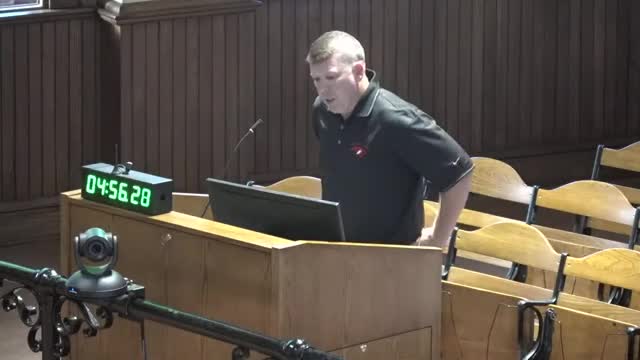Landowners rally against restrictive zoning plan changes
August 21, 2024 | Iredell County, North Carolina
This article was created by AI summarizing key points discussed. AI makes mistakes, so for full details and context, please refer to the video of the full meeting. Please report any errors so we can fix them. Report an error »

In a recent government meeting, significant concerns were raised regarding a newly adopted land use plan that imposes strict regulations on landowners in tier one areas. Several local residents and stakeholders voiced their opposition, arguing that the plan, which was adopted in December, lacks adequate community outreach and fails to consider the implications for landowners and housing affordability.
One speaker, who identified as a landowner, emphasized the need for better communication about how the plan would affect major landowners, particularly those with large farms. He expressed concern that the restrictions could devalue their properties and limit their ability to utilize their land as they see fit. He called for a reevaluation of the policy, suggesting that it should not be tied to the current land use development code without further community input.
Another speaker, representing the Home Builders Association, warned that the plan could lead to unintended consequences, such as driving up housing prices and making it difficult for essential workers, like teachers and first responders, to afford homes in the area. He criticized the notion of \"affordable housing\" when new developments could still price homes at $400,000 or more, which he argued is not truly affordable for many families.
Several farmers and landowners echoed these sentiments, describing the plan as government overreach that restricts their rights and diminishes the value of their land. They argued that limiting development to one house per five acres would not preserve farmland but rather push more land into urban development, countering the plan's intended goals.
The meeting highlighted a growing frustration among community members regarding the lack of transparency and engagement in the planning process. Many expressed a desire for a more collaborative approach to land use planning that considers the needs of both landowners and the community at large. As the discussions continue, stakeholders are urging local officials to reconsider the implications of the current plan before further implementation.
One speaker, who identified as a landowner, emphasized the need for better communication about how the plan would affect major landowners, particularly those with large farms. He expressed concern that the restrictions could devalue their properties and limit their ability to utilize their land as they see fit. He called for a reevaluation of the policy, suggesting that it should not be tied to the current land use development code without further community input.
Another speaker, representing the Home Builders Association, warned that the plan could lead to unintended consequences, such as driving up housing prices and making it difficult for essential workers, like teachers and first responders, to afford homes in the area. He criticized the notion of \"affordable housing\" when new developments could still price homes at $400,000 or more, which he argued is not truly affordable for many families.
Several farmers and landowners echoed these sentiments, describing the plan as government overreach that restricts their rights and diminishes the value of their land. They argued that limiting development to one house per five acres would not preserve farmland but rather push more land into urban development, countering the plan's intended goals.
The meeting highlighted a growing frustration among community members regarding the lack of transparency and engagement in the planning process. Many expressed a desire for a more collaborative approach to land use planning that considers the needs of both landowners and the community at large. As the discussions continue, stakeholders are urging local officials to reconsider the implications of the current plan before further implementation.
View full meeting
This article is based on a recent meeting—watch the full video and explore the complete transcript for deeper insights into the discussion.
View full meeting
